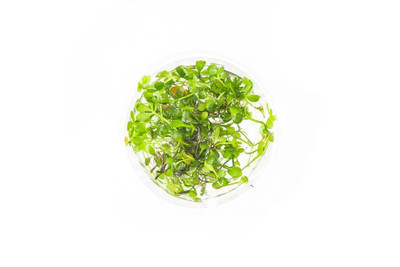Marsilea Hirsuta
Posted by Max Gandara on on 18th Oct 2024
Marsilea Hirsuta: A Unique Aquatic Plant for Aquascapes
Marsilea hirsuta, commonly known as Hairy Water Clover, is a fascinating aquatic plant that adds a unique touch to freshwater aquariums and aquascapes. With its distinctive clover-like leaves and low growth habit, this plant is favored by aquarists who appreciate both its beauty and versatility. Whether you are a beginner or a seasoned aquarist, Marsilea hirsuta is an excellent choice for enhancing your underwater landscape.
In this blog, we’ll explore the origins, care requirements, and best uses of Marsilea hirsuta in aquascaping, allowing you to make the most of this charming aquatic plant.
Latin Name and Place of Origin
The scientific name of this plant is Marsilea hirsuta, and it is native to tropical regions of Africa, Asia, and Australia. It typically grows in shallow waters, marshes, and along the edges of ponds and rivers. In its natural habitat, Marsilea hirsuta thrives in both submerged and emersed conditions, making it a versatile plant for various aquatic environments.
Appearance and Growth
Marsilea hirsuta features small, clover-like leaves that grow in groups, giving it a distinct and attractive appearance. The leaves can be either floating on the water’s surface or submerged, depending on the light and water conditions. When fully submerged, the leaves can appear more elongated, resembling a delicate carpet in the aquarium.
- Height: Typically grows to about 2-4 inches (5-10 cm)
- Leaf Shape: Tri-fold, resembling clover
- Color: Bright green with a glossy texture
This plant's low growth habit and dense foliage make it an excellent choice for creating a lush foreground or midground in aquascapes.
Ideal Conditions for Marsilea Hirsuta
Marsilea hirsuta is known for its adaptability, making it suitable for various aquarium setups. However, there are specific conditions that will help it thrive:
1. Lighting
Marsilea hirsuta can grow well in low to moderate light but will thrive with moderate lighting. Adequate light promotes healthy growth and vibrant coloration.
- Lighting intensity: Low to moderate (PAR 20-50)
- Duration: 8-10 hours daily
In low-light conditions, the plant may not grow as quickly, so providing sufficient light will encourage robust growth and fuller foliage.
2. CO2 and Nutrients
While Marsilea hirsuta can grow without CO2 supplementation, providing CO2 can enhance its growth rate and overall health, especially in high-tech setups. Fertilization with liquid fertilizers containing essential nutrients is also beneficial for optimal growth.
- CO2: Not necessary but advantageous
- Fertilization: Regular liquid fertilization with a balanced nutrient solution is recommended.
3. Water Parameters
Marsilea hirsuta is adaptable to a variety of water conditions, making it suitable for most community tanks. Here are the ideal water parameters for this plant:
- Temperature: 68-82°F (20-28°C)
- pH: 6.0-7.5
- Water hardness: Soft to moderately hard
This plant can tolerate fluctuations in water quality, which adds to its appeal for both beginners and experienced aquarists.
4. Substrate
Marsilea hirsuta grows best in a nutrient-rich substrate, such as aquasoil or a planted tank substrate. However, it can also adapt to inert substrates if root tabs are used to provide essential nutrients.
Propagation
Marsilea hirsuta can be propagated through runners, which are horizontal stems that produce new plants (daughter plants). This method allows the plant to spread across the substrate, creating a lush carpet effect.
- Propagation method: Allow runners to spread naturally or separate the daughter plants for replanting.
You can also encourage propagation by planting small sections of the plant in different areas of the tank, allowing them to establish themselves and create a more diverse aquascape.
Best Use in Aquascaping
Marsilea hirsuta is a versatile plant that can be used in various ways within aquascapes. Here are some of the best uses for this charming aquatic plant:
1. Foreground Plant
Due to its low growth habit and dense foliage, Marsilea hirsuta is ideal for use as a foreground plant. It can create a beautiful, lush carpet at the bottom of the tank, enhancing the overall aesthetic and providing a natural look.
2. Midground Plant
In larger aquariums, this plant can also serve as a midground plant, providing a transitional layer between taller background plants and smaller foreground species. Its unique leaf shape adds visual interest and texture to the aquascape.
3. Natural Habitat for Fish
Marsilea hirsuta offers shelter and hiding spots for smaller fish and invertebrates, making it a valuable addition to community tanks. Its dense growth can help create a natural habitat, promoting the well-being of aquatic life.
Common Challenges and Troubleshooting
While Marsilea hirsuta is generally easy to care for, some common issues may arise:
- Slow Growth: If the plant isn’t thriving, check for adequate lighting, nutrients, and CO2 levels. Increasing light intensity or adding fertilizers may help promote growth.
- Algae Growth: In tanks with low light, Marsilea hirsuta may compete poorly against algae. Maintaining proper lighting, water quality, and regular maintenance can help mitigate this issue.
- Yellowing Leaves: If the leaves begin to yellow, it may indicate nutrient deficiencies. Regular fertilization can help prevent this problem.
Conclusion
Marsilea hirsuta is a unique and versatile aquatic plant that can enhance the beauty of any freshwater aquarium or aquascape. Its clover-like leaves and adaptability to various conditions make it a popular choice among aquarists. Whether you’re looking to create a lush carpet in the foreground or add interest to the midground, Marsilea hirsuta is a valuable addition to your aquatic landscape.
With proper care and maintenance, this charming plant can thrive and contribute to a stunning and vibrant aquarium environment, making it a beloved favorite for hobbyists around the world.

